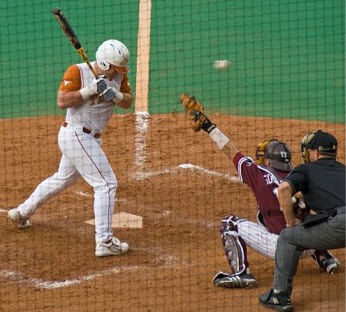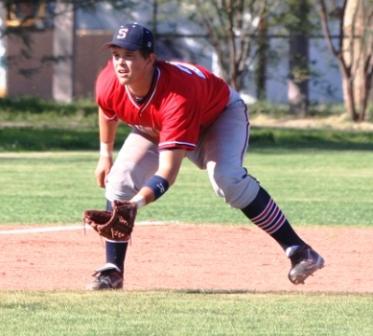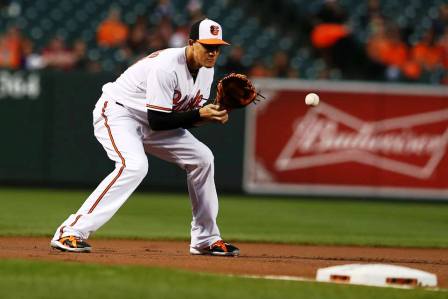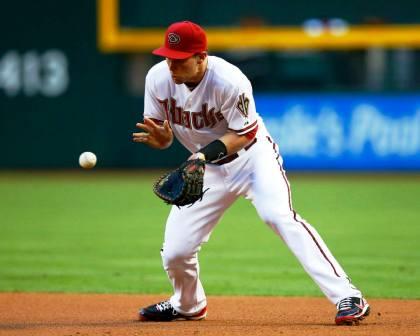 |
||
~Minimize The Fear Of Being Hit By The Baseball ~Having received a large number of questions concerning their player's fear of being hit with a baseball, from coaches and parents, I thought a page relating to that topic would be helpful. Whether it is batting or fielding, this concern has certainly been a part of baseball since its' inception, over 170 years ago. Without a doubt, if you have played baseball at any level, to include your neighborhood park, you have experienced being hit. The most common fear is with a pitched ball; but there is also a bad hop ground ball, as well as a thrown or batted ball. All are real and legitimate. So how do we help players move beyond the paralysis level, to the aggressive take charge level, in their baseball life? Providing them with the skills to manage the fear and decrease their vulnerability for getting hit, is a big step towards that goal. 
An experience easy to forget? Not hardly! Some, Or All Of The Following May Sound Familiar:
The list goes on; Unfortunately, none of those suggestions will do anything to help the situation. The phrase,"don't think about getting hit," becomes think about getting hit. The image implant is "getting hit", and the words "don't think" cannot block out the getting hit image. Fears come from uncertainty, and the uncertainty indicates a lack of confidence. That lack of confidence comes from not having a plan to deal with the situation. Providing them with a plan to minimize the perceived danger of getting hit, the steps to concentrate and hit the ball hard, creating good hop ground balls for themselves, and the rules of thumb for catching a baseball safely, all increase confidence and cause success levels to rise. A Plan For The Batters' Box. Turning Their Front Shoulder Back Towards The Catcher Will Turn Their Head And Protect Their Face.As you look at the image below, there are things you can point out to the players as to how much safer this method is:
 Controlling The Concern ~ Tips From the Dugout
A Plan For Ground BallsPlay the ball, don't let the ball play you. A standard rule for all ground balls, but how do I accomplish that? I was always taught that if you didn't need to come and get a ground ball, you wouldn't have time to think about it anyway. Providing young players with a goal, or objective for each ground ball provides them with something to focus on, rather than the possibility of a bad hop. Try setting a goal for them to limit all ground balls to no more than 3 hops for younger players, 2 hops for those more advanced:  It isn't an immediate process. With time they will see that the hops they are creating for themselves make everything easier and safer, to include the subsequent throw. How About Those Line Drives, Or Balls That Are Thrown?So much of the receiving process is an understanding of the rules of thumb. These rules allow the player to get their glove in the best possible position to catch the ball, as well as the safest. The Rules Of Thumb 


The PayoffIt's the purest reward for a baseball coach when you see the smile emerge and the eyes light up, as all the effort comes to fruition. A 6 year old catches a ball above his waist with his thumbs together, keeping the ball from rolling up his glove, straight at his face. He is on his way to a skill which helps eliminate the fear of being hit with a thrown or batted ball, dramatically increasing his safety, self confidence and level of fun! They are special moments indeed, and some of life's greatest pleasures, no matter what level you coach! return from fear of being hit to theoleballgame.com Additional Hitting Topics
An approach that enabled our players to put the ball in play early and often, a recipe for success Keys to success We don't miss these pitches and we don't try to do too much ( Alex Rodriguez, Ken Griffey Jr., Edgar Martinez, John Olerud ) MLB's Top 20 Hitters For 2009 Hitting splits for the top 20 hitters in MLB for 2009 Batter development One valuable goal is to coach players to become their own best hitting coach Batting Average Analysis What it can tell you to help create a positive hitting plan Rookie progressions Keep it fun and simple, encourage them to turn it loose and swing Advanced progressions Watching batting styles of professional baseball players one might assume that anything goes, in relation to pre-pitch movement Hitting The Situation A key part of teamwork and offensive production return from baseball hitting to theoleballgame.com  | ||